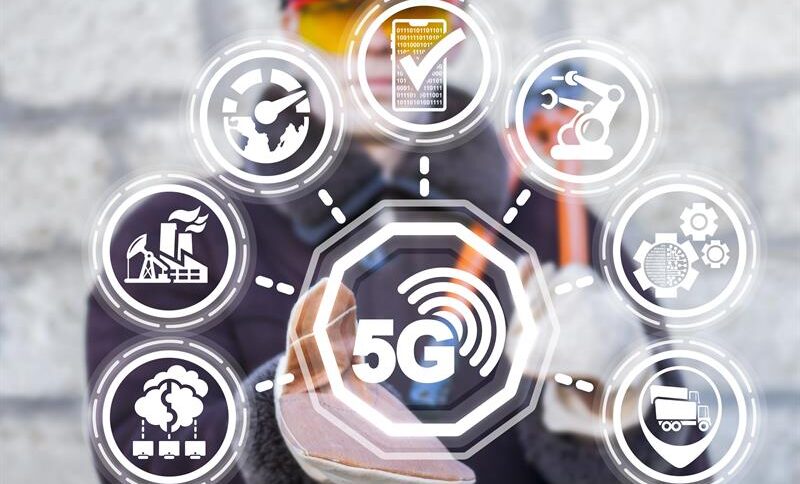The next era of industrial production, Industry 4.0, is now upon us, fuelled by advancements in technology such as the rise of big data, automation and cyber physical systems. One particularly significant opportunity for growth within this revolution is the Industrial Internet of Things (IIoT), which covers a variety of applications used in everything from manufacturing, to container ports and power plants. The processes and operating models that make up the IIoT can be elevated to the next level with the high-performance, ultra-low latency connectivity offered by 5G wireless networks.
According to ‘The 5G Economy’, an independent study carried out by IHS Economics and Technology in early 2017, the full economic benefit of 5G should be realised around the globe by 2035 when a broad range of industries, enabled by mobile technology, could be responsible for the production of up to $12 trillion worth of goods and services. Whether enabling enhanced broadband with fibre-like speeds, mission-critical connectivity with sub-millisecond latencies, or connecting the myriad different devices that comprise massive IoT, 5G is designed as a platform capable of handling a diverse set of services across a wide array of spectrum bands from below 1 GHz up to mmWave and supporting several deployment models from macro to indoor to private networks. A unifying connectivity fabric for innovation, not only will 5G handle the needs of today’s industries, but it is forward compatible, with flexibility to deal with services that are yet devised.
Different use cases
Let us consider the ‘factory of the future’; a wireless environment in which everything is monitored and optimised. By enabling high-performance wireless communications, 5G offers considerable potential for use cases such as assembly line automation, automated guided vehicles (AGV) decision-making, and the collection of data from sensors to inform machine learning solutions, and AR and VR applications.
What’s more, although each of these use cases may have different requirements in terms of speed, latency or bandwidth, 5G is able to handle them as part of a single network.
Depending on their requirements, some use cases can be more challenging and demanding than others. Motion control systems, for example, responsible for controlling the well-defined movements of machines, have very strict requirements regarding latency, reliability, and determinism, while the constant transmission of data within the massive IoT requires high capacity, and the transmission of high-definition video streams to and from augmented reality (AR) devices is heavily dependent on high data rates. The needs of process automation, on the other hand, which employs a variety of different sensors and actuators to monitor and control processes within a plant, sit somewhere between the two. These use cases require Ultra Reliable Low Latency Communication (URLLC), a key element of 5G-enabled wireless connectivity capable of delivering six nines of reliability at less than 1ms latency, meeting all their needs within a single network.
The factory floor can be a tough environment for wireless communications, however. Blockages and reflections caused by fast-moving metal objects such as cranes and conveyor belts can lead to sudden drops in RF signal strength, and rapidly time-varying interference from the small cells deployed throughout the facility.
Overcoming these limitations and enabling the necessary ‘six nines’ reliability requires spatial diversity in order to avoid drop-outs and overcome signal blockages.
largest reservoir of bacterial pathogens in a long-term care facility is not on the toilet seats, push bars or handrails — it’s on the floors and carpets. That is why experts across the cleaning industry strongly suggest custodial staff, supervisors and facility managers enact and embrace programs to clean and properly maintain vacuums, extractors and interim cleaners in order to prevent the growth and spread of dangerous bacteria.
To begin building a process and creating the culture to address the issue, custodial staff and officials at a long-term care facility should complete an audit documenting current cleaning practices. The audit can be used to set short-term and long-term priorities, such as creating a machine-cleaning program. An assessment of the cleanliness of the facility’s carpets and machines using an adenosine triphosphate (ATP) test can also provide valuable data.
The first step after an audit and assessment is educating and training the custodial staff on where pathogens live, how they are spread and what cleaning procedures kill them, says Mike Sawchuk, founder of Sawchuck Consulting, Ontario, Canada. A review of cleaning, sanitizing and disinfecting processes may also be in store.


